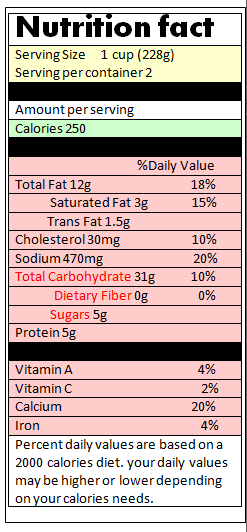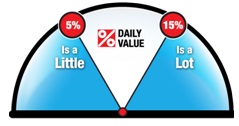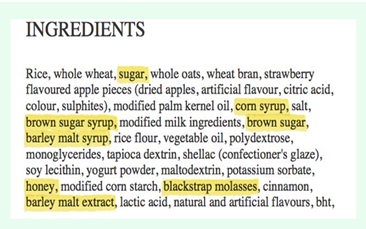Food selection
Grocery shopping can be very overwhelming: you don’t know where to begin and you may get lost between the aisles, the products, and the labels. Sometimes it is boring and tiring, especially if it is at the end of a long working day, so you hurry and buy anything to get it done. And other times it is fascinating and tempting with the presence of a lot of new pleasurable and delicious products to try and to buy, especially when you are hungry. So, a little mindfulness can get you back on the healthy track while purchasing your food.

Shopping tips
For healthy cooking, you must have the right ingredients in your kitchen. Good nutrition for you and your baby starts at the grocery store. When you shop mindfully, you avoid unplanned purchases and buying more than you need. Here are a few suggestions to help you get started.
Before You Go
- Check your fridge, freezer and pantry first: you don’t want to buy what you already have!
- Plan all your week’s meals and snacks in advance: Schedule them and make a list of all the ingredients you need. Start by planning meals with items you already have.
- Make a list of the items that you need to buy: Knowing what you need at the store can help you avoid forgetting items, and can cut off unwanted distractions and restrain any impulsive purchases that will increase your bill.
- Have a snack before your grocery shopping: Grocery shopping when hungry weakens your will to avoid buying junk food, or makes you overestimate the amount of the food you need.
When Shopping
- Visit only the sections where your items on the shopping list are: Don’t wander around sections you don’t need; the attractive advertisement and the tasting tables are convincing enough to make you buy things you don’t need.
- Go for fresh food and start shopping the perimeter of the store: The freshest, least processed foods such as fruits, vegetables, dairy, meat, and fish are usually located in the outer aisles of the grocery store. Try to avoid the center aisles where junk foods and the most processed foods hide.
- Choose the least processed when fresh is not available: if you have no choice and must buy processed food:
- Frozen or canned fruits and vegetables and dried legumes are convenient alternatives to fill the seasonal gap especially during winter. Pickled vegetables tend to be high in added salt and preservatives, so limit them as much as you can.
- Tuna packed in water is a better choice than tuna packed in oil. Avoid white or albacore canned tuna due to their mercury content (see food safety).
- Dried / canned legumes or tofu are cheap, lean and good meat alternative options.
- Beware of processed and packed animal products: There is a lot of hidden salt and preservative products in salami, ham, corned beef, bacon, smoked salmon, and Frankfurts. In addition, they are not safe (see foods to avoid) during pregnancy.
-
Fewer ingredients + Less processing = Better food
Pay Attention!
- If you buy items in bulk: Plan to package them in smaller containers. You may need to freeze them. Larger packages in front of you may lead to overeating or food spoilage.
- Don’t buy what you cannot resist later: Free samples are offered to encourage you to try new products which are most likely processed and packaged- not so good for you, your baby, and your family and friends.
- Avoid take-out and convenience foods: These are expensive, often high in fat, salt and sugar and leave you hungry again soon after you eat them.
- If you can prepare your foods to be ready for cooking when you come home from the store, you will find it easier to “cook at home” because it will save a lot of time in your busy week.
REMEMBER: Outdoor markets can be a great place to shop for food and can often offer a wide range of fresh, unpackaged produce
Reading food labels
It is preferable to buy food without food labels. Most labelled food is processed and less wholesome. The types of foods you want to buy are fresh fruits and vegetables and unprocessed meat, chicken, or fish. However, if those options are not available, some packaged foods can be good alternatives on condition that you try to choose healthy options.
Reading the food label and ingredients list of a packaged food can help you:
- Know exactly what you are eating
- Compare different foods
- Make healthier choices for you and your family
Nutrition Facts Label
The Nutrition Facts table is easy to find.
- The serving size on the package is not necessarily the amount you should eat. Remember portion sizes using your hand (see How Much?). Also remember that how much you should eat depends on your weight before pregnancy, your weight change so far in pregnancy, and the advice of your health care team.
- When comparing two products, make sure you compare the same serving sizes.
Calories quantify the amount of energy in food.
- Consuming calories more than your body requirement over time may lead to excessive weight gain.
- Consuming calories less than your requirement over time will lead to weight loss.
- Choose foods rich in protein, fibre, vitamin C, calcium and iron.
- Avoid foods rich in sugars, fats (saturated & trans fats), cholesterol and sodium.
- The 13 core nutrients are presented in the nutrition label table by their weights and % of the daily recommended value to eat. These percentages are for non-pregnant women.
- As a woman with GDM, you need to pay particular attention to the amount of carbohydrates. This is helpful if you are using carb counting methods. It also gives you a general idea of carbohydrate content and whether these are ‘smart’ (see smart carbs).

Percentage of Daily Value?
% Daily Value (%DV) of nutrients are found on the right side of the nutrition facts label. They are a useful guide to know if the serving size of a food:
- Has a little of a certain nutrient or
- Has a lot of a certain nutrient.
To make a good choice, compare the % DV of equal serving sizes of different foods and try aim for:
- More fibre and protein.
- Less sugars, less saturated fat, less trans fats and less sodium.

A nutrient of 5% DV or less is a little,
A nutrient of 15% DV or more is a lot.
Ingredients List
The ingredients list details all the ingredients in the packaged food in descending order by weight.
- The item in the greatest amount is listed first.
- The item that weighs the least is listed at the end.
- Look for added sugars in your ingredient list.
- Make sure that they are not the first two or three ingredients listed.
- Being the first items of the ingredient list means that your product contains a lot of sugars.

Sugar can be disguised in other words such as:
- Corn syrup, rice syrup, barley syrup
- High-fructose corn syrup
- Fruit juice concentrate
- Malt syrup, maltose, maltodextrin
- Dextrose, sucrose, saccharose, fructose, lactose
- Sorghum, sorghum syrup
- Invert sugar, turbinado sugar
- Molasses
- Honey
- Maple syrup (or any other syrup)
Beware: the words syrup and sweetener, or anything ending with “ose” can be assumed to be sugar!
